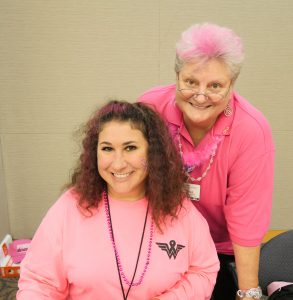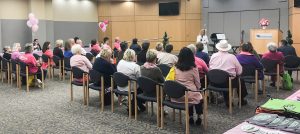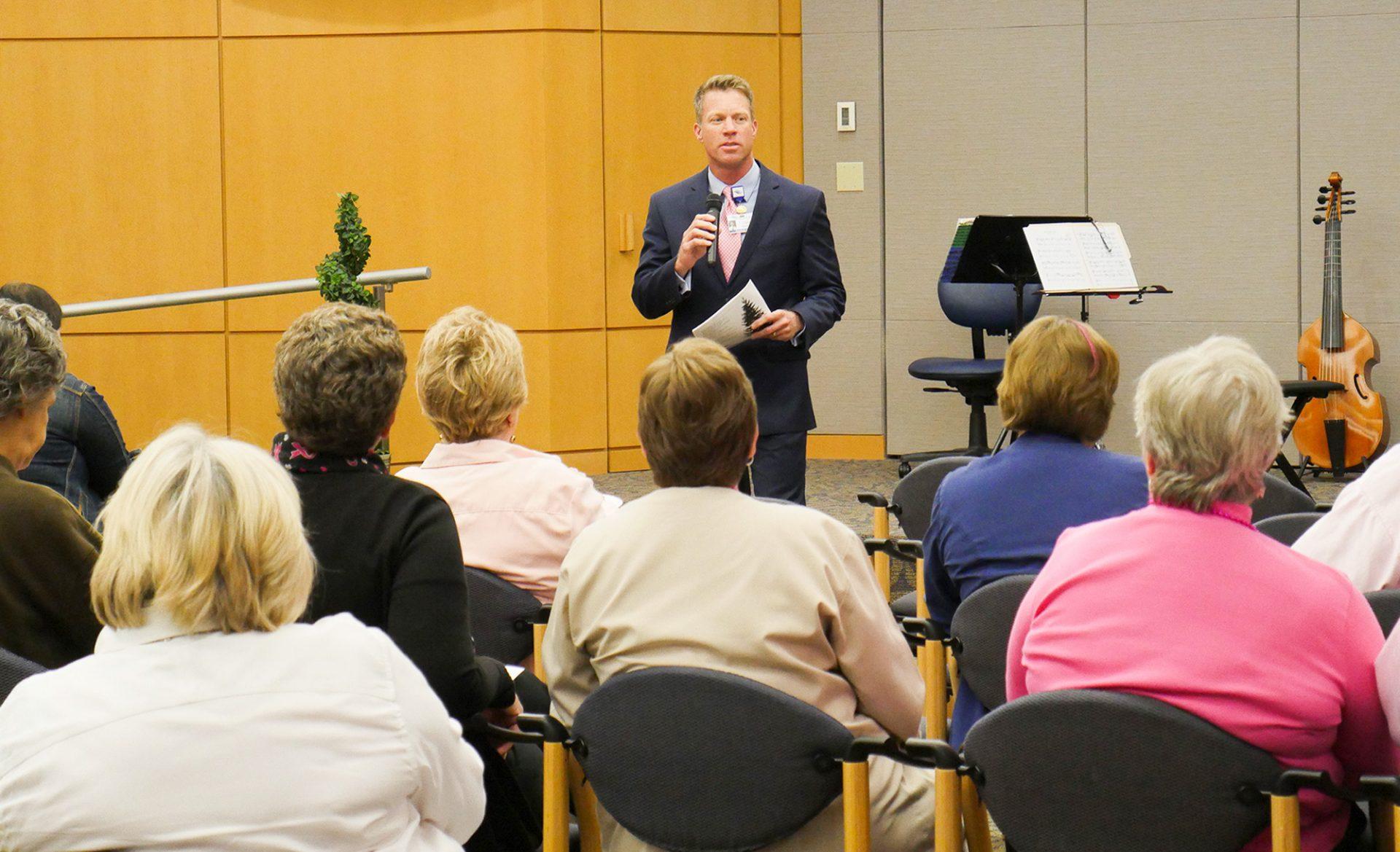Pink-haired Sandi Cassidy smiled and placed a pink beaded necklace around another woman sporting a pink ‘do. Pink balloons, pink frosted cupcakes, pink popcorn, pink rubber ducks and pink floral arrangements were scattered around Watauga Medical Center’s auditorium Friday for the 10th annual Pink Day.
Pink Day is a breast cancer awareness fundraiser that began at Cannon Memorial Hospital in Linville, North Carolina. Cassidy, director of oncology services and Pink Day coordinator, has been involved since the beginning of Pink Day.
Pink Day raises money through raffle items and donations, 100 percent of which goes toward the Wilma Redmond Mammography Fund. The Wilma Redmond Mammography Fund pays for mammograms for patients who cannot otherwise afford to pay.

Wilma Redmond was the radiology director for Appalachian Regional Healthcare System. Redmond died from breast cancer, so ARHS created the Wilma Redmond Mammography Fund in 2001 in her honor.
Pink Day raises about $2,500 each year, Cassidy said.
But Pink Day does not only focus on raising money. Pink Day volunteers offer information on upcoming breast cancer awareness events and fundraisers, how to conduct breast self-examinations and how to pick out wigs if a patient has lost their hair from chemotherapy.
Mammographers encouraged people at Pink Day to sign up for a mammogram.
Signing up for a mammogram is an important first step to Gloria Payne, ARHS mammographer and Pink Day volunteer. Payne said that they used to conduct three mammograms a day, but now they do 35 to 40 mammograms a day.
Of those mammograms, 44 percent of them show a positive result for breast cancer.
While Pink Day can be educational and informational, it is also a source of fun.
“It’s a little bit of joy to the patients in the form of pink gifts and pink food,” Mary Morgan, Pink Day volunteer, said.
Morgan is a breast cancer survivor of five years and went through radiation at Watauga Medical. After receiving help through AHRS, Morgan wanted to give back and volunteer.
Another Pink Day volunteer and six-year breast cancer survivor, Irene Sawyer, gave a speech detailing her “lucky” experience of detecting her breast cancer.
“How many people are fortunate to have a tumor pop out and say ‘Here I am’?” Sawyer said.
Sawyer said she felt a responsibility to to give back to patients who underwent experimental medications and surgeries and were not as lucky as she was. When she moved to Boone from Columbus, Ohio, she did a Google search for breast cancer awareness runs in the area.
Zero results appeared in her search.
Thus, Sawyer founded High Country Breast Cancer Foundation, Inc., which will host the High Country Walk and Run for Breast Cancer on Oct. 28. The High Country Walk and Run volunteers offered brochures at Pink Day with Sawyer’s story, trail information and breast cancer diagnosis statistics.
Doc’s Rocks Gem Mine owners, Doc and Trina McCoy, also played a part in Pink Day. The McCoys auctioned off pink sapphire and rose quartz earrings, rings and bracelets.

They have raised money for Mining for a Cure for the past six years. Proceeds go to the Cancer Patient Emergency Fund.
This year, Doc’s Rocks broke their $18,000 goal at Pink Day.
“This is how we fight,” Doc McCoy said.
Pink Day isn’t the only fundraiser that ARHS has throughout the year.
ARHS hosts Lighting of the Tree close to Christmas, where volunteers sell porcelain ornaments dedicated to cancer patients. All of the proceeds go to the Watauga Medical Cancer Center. ARHS also puts on a spring fashion show, Pretty in Pink, which also raises money for the cancer center.
Additionally, ARHS hosts Radiance Day, which focuses on the physical changes cancer patients go through. Volunteers aid patients in finding wigs and offer advice on adapting to skin changes after chemotherapy. Cosmetologists are on hand to provide makeup and beauty tips.
“It takes a village,” Charles “Chuck” Mantooth, CEO and president of ARHS, said of everyone involved with treating a patient with breast cancer. “In our little village here, that’s you.”
Story By: Sydney Wolford, A&E Reporter
Courtesy photos from Vicki Stevens

